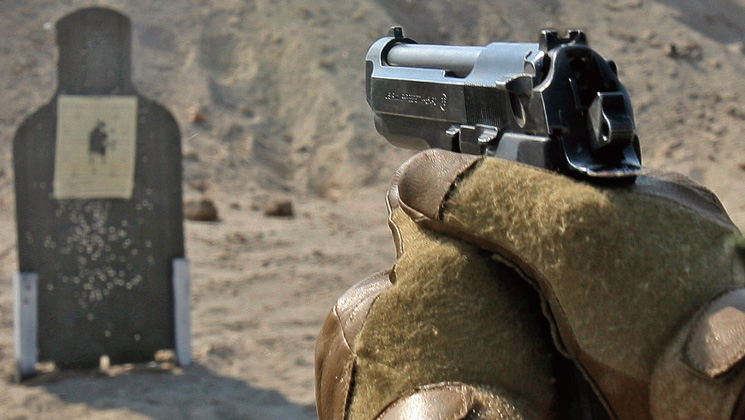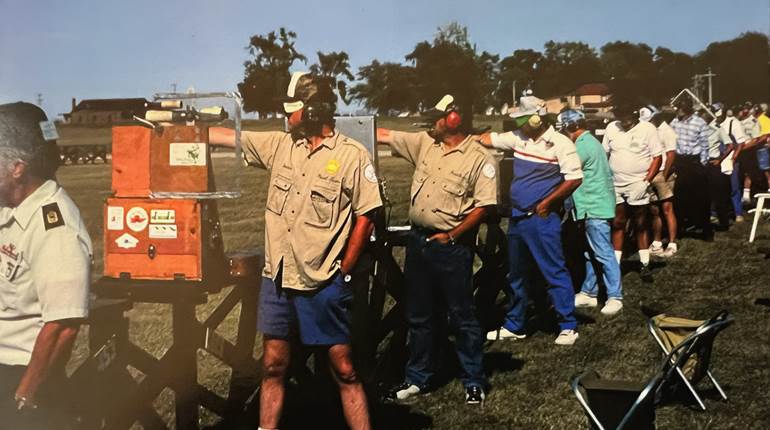
Thanks to the Great Blizzard of 2016, the Army has extended the deadline until Feb. 12 for entrance into its XM17 Modular Handgun System (MHS) trial, according to an Army Times report. This process, which really started with the Joint Service Pistol program years ago and went nowhere, will select the next service handgun for the United States Army. The Marine Corps (which is said to be very satisfied with its rail-equipped M9A1) is taking a wait-and-see approach and will no doubt review the Army’s PowerPoint presentation after the fact.
The MHS, which I have written about before, continues to progress. The stakes are large. And this is not an inexpensive trial to participate in for manufacturers. It is said that each company entering a gun into this trial will end up spending $1 million or more—with no guarantee of a big, fat contract at the end.
The MHS process so far has been described by Sen. John McCain (R-Ariz.) as “Byzantine.” I am not sure that even Aristophanes would have had the patience to wade through the more than 350-page requirement. And in all those 350 pages, it does not even set the cartridge that this new gun might be chambered in. The gun manufacturer had to decide which gun and which load to submit, pairing a gun with a load, be it 5.7 mm, 9 mm, .357 SIG, .40 S&W or .45 ACP. This at a time when 9 mm Luger is getting a more serious look from every law enforcement agency in the nation. And there is no guarantee that the Army will actually place an order at the end of this several year-long process. Then there is whole, pesky NATO standardization thing.
In order for a new service pistol to be issued to soldiers, there actually has to be funding through the appropriations process. And the funding is not limited to just writing a check for the guns themselves. There are additional costs, such as spare parts and, in particular, training. Training armorers as well as the troops to use the new gun, whatever it may be, and in whatever caliber it might be chambered for.
Some companies have bowed out of the process altogether. The recently introduced Ruger American Pistol was designed to meet many of the requirements set forth for the XM17. But Ruger's management decided it was a bad investment to participate in the program. Ruger would, of course, have liked to have that feather in its cap, after all the only U.S. military procurement of Ruger handguns in the past has been limited to some .38 Spl. revolvers for the Air Force and .22 Long Rifle training and competition guns.
But that has not scared other manufacturers away. Glock will be submitting guns, as well SIG Sauer with its new P320. Fabrique Nationale—through U.S. subsidiary FN America—has confirmed it will submit a striker-fired 9 mm pistol, and Smith & Wesson is betting on a variant of the M&P. Last I checked, Heckler & Koch was on the fence, but Beretta is definitely participating.
The U.S. M9 in 9x19 mm NATO has been the standard sidearm of the U.S. military since the Italian design replaced the M1911 in 1985. Beretta sought to meet many of the Army’s requirements with an updated version of its gun dubbed the M9A3 under its existing contract. But the Army soundly rejected Beretta’s attempt, and the M9A3 was disqualified from entrance. Beretta is instead entering its new APX pistol for consideration as the XM17.
There is no doubt that our troops, who face increasing threats around the world, need the finest combat pistol available. Because when a soldier on the battlefield needs to go to his or her sidearm, things have gotten very bad indeed. It is my hope the XM17, regardless of which company makes it and whatever cartridge it takes, is the right tool for the job.























![Winchester Comm[94]](/media/1mleusmd/winchester-comm-94.jpg?anchor=center&mode=crop&width=770&height=430&rnd=134090756537800000&quality=60)
![Winchester Comm[94]](/media/1mleusmd/winchester-comm-94.jpg?anchor=center&mode=crop&width=150&height=150&rnd=134090756537800000&quality=60)











